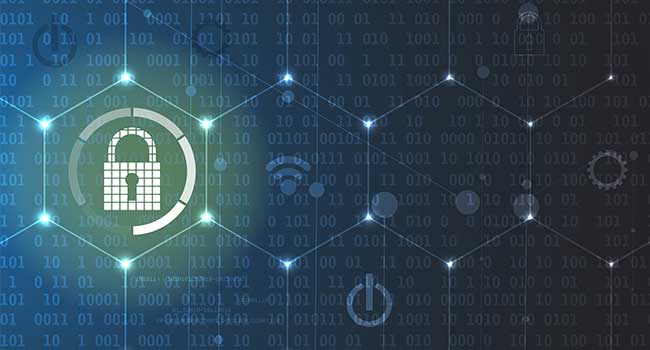
Next Level Security in 2022: Passwordless Authentication
- By Dan DeMichele
- Jul 06, 2022
It’s no secret that cyberattacks and data breaches are on the rise. You’ve likely heard about it on the news or may have experienced it first-hand. A commonality between these attacks becoming easier and more frequent might surprise you – simple passwords.
While it may seem easier to utilize the same, easy-to-remember password switching from account to account, it actually puts your personal information or company’s data at an elevated risk. Security experts have long been aware that consumers and businesses are not taking the appropriate steps to safeguard their passwords. In fact, 85% of security experts agree their organization should reduce the number of passwords used daily. The sentiment has been echoed time and time again by cybersecurity experts and IT professionals alike, urging the use case for strong, secure passwords, but adoption has remained stagnant. Whether phishing or simple carelessness, passwords are easily abused. That leaves the question – how do we prevent this?
Enter: A Passwordless Era
Our technology ecosystem has become more connected, infinitely complex, and the bad guys have only gotten smarter. The message that users are to blame is flawed – with so many factors going on in our daily lives, password security is often at the bottom of the list.
We’ve all gotten used to using passwords to live, work, and play online for decades. But what if we could eliminate the worry of protecting passwords altogether? A world without passwords may soon be our new reality. A new and likely unfamiliar login called ‘Passwordless Authentication’ offers a more reliable way to prevent these kinds of attacks that is unique to each person.
Passwordless authentication, as the name suggests, does away with passwords altogether in favor of stronger authentication factors. Rather than asking you to provide something you know, such as a password or a code, it requires something you have, like a passkey that’s coupled and protected by something you are – your face, your fingerprint, or your voice through biometrics. This makes it much harder for hackers to steal or fake our unique physical characteristics, which means a passwordless approach could actually provide more peace of mind.
With this Passwordless login, secure authentication ensures that strict security practices are in place – keeping users and businesses’ personal and sensitive information safe and secure.
The Solution You Didn’t Know You Needed
You might be thinking, this all sounds great in theory, but what are the immediate benefits? To put it simply: security, a simpler experience, and cost efficiency. Passwordless authentication provides solutions where they are needed most.
Passwords may feel secure to us, considering most of us have been using them our entire lives to safeguard our sensitive information. However, passwords alone can’t secure business accounts and data anymore. The use of passwordless authentication offers unmatched, enhanced security for consumers and enterprises. As there are no passwords to phish or compromise, the likelihood of being exposed to phishing attacks or account takeover attacks is reduced.
By coupling biometrics and a passkey in place of a singular password, companies make it much harder for malicious actors to fake their employees’ credentials. This creates a stronger identity for the employee who then becomes their own source of verification, which also means that they don’t have to remember complex jumbles of numbers, letters, and symbols to access their many work accounts. With an easier way to log in, employees are much less likely to engage in risky password behaviors like password re-use or failing to change their passwords even after a breach has occurred.
A passwordless approach to authentication also greatly improves the user experience. Individuals will be able to access their services without having to remember complex passwords and type them over and over. When passwords are removed from the login equation, you'll no longer waste time having to reset your passwords, and IT teams will no longer spend hours helping employees regain access and resolve mundane issues. Passwordless makes the login process safe, secure, and simple enough for anyone.
A bonus for employers and IT staff is that by going passwordless, it will help reduce the costs associated with mundane password resets and monitoring. With the increased use of technology platforms and software, employees often get tired of remembering passwords and try to get around this requirement by using poor password hygiene. If they re-use a password or never change it, IT teams are spending a considerable amount of time figuring out how to manage the cybersecurity risks that these behaviors create. While this might seem small, this inefficiency ends up costing businesses both money and staff resources that could be better utilized - or worse, ends up causing an awfully expensive breach.
What’s Next? Increased Adoption & Innovation
Passwordless is here, but there are a few steps that need to be taken before adoption is widespread. Announcements around passwordless authentication from global companies have come to the forefront over the past few months, with the promise of delivery and enhanced security coming soon.
This is a critical moment in time for our world, as we work to build a more secure future. At a fundamental level, passwordless offers better security with room for future innovation. In order to take advantage of true end-to-end passwordless capabilities, the varying devices, operating systems, browser components and applications customers access will need to be modified to make use of the Web Authentication API standards. Standard approaches for portability and recoverability of passkeys and biometrics across different device and operating system platforms are under development, with a promising future of an easily implemented and standardized authentication.